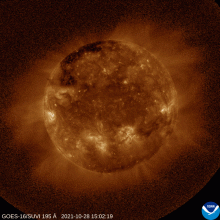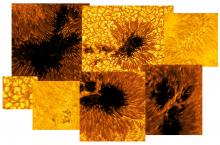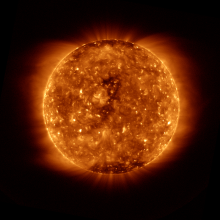Listen to today's episode of StarDate on the web the same day it airs in high-quality streaming audio without any extra ads or announcements. Choose a $8 one-month pass, or listen every day for a year for just $30.
You are here
Helioseismology
The surface of the Sun jiggles constantly. And by measuring those jiggles, astronomers learn about what’s happening inside the Sun — from the surface all the way down to its core.
The field is known as helioseismology. And it works along the same principles as seismology here on Earth. Geologists study Earth’s interior by measuring sound waves that ripple all through our planet. Astronomers do the same thing by measuring sound waves that ripple through the Sun.
The waves are created by the motions of giant bubbles of hot gas that rise and fall through the Sun’s outer layers. The waves then travel great distances through the Sun. When they reach the surface, they cause the surface to rise and fall by a tiny bit — creating jiggles.
Since the waves travel through different parts of the Sun, each set carries information about the Sun’s interior — about differences in composition, temperature, and density, for example. So putting together many sets of waves helps astronomers map the Sun’s structure, and better understand what’s happening inside our star.
Astronomers use sensitive instruments to measure the tiny jiggles on the Sun’s surface. The measurements have revealed 10 million sets of waves traveling through the Sun. Those observations can be converted to sound. They allow us to hear the jiggles at the surface of the Sun — acting as probes into the heart of a star.





